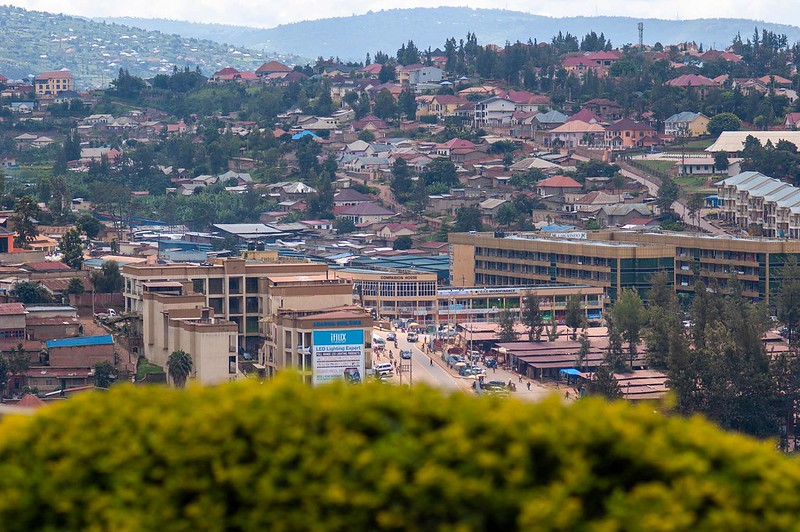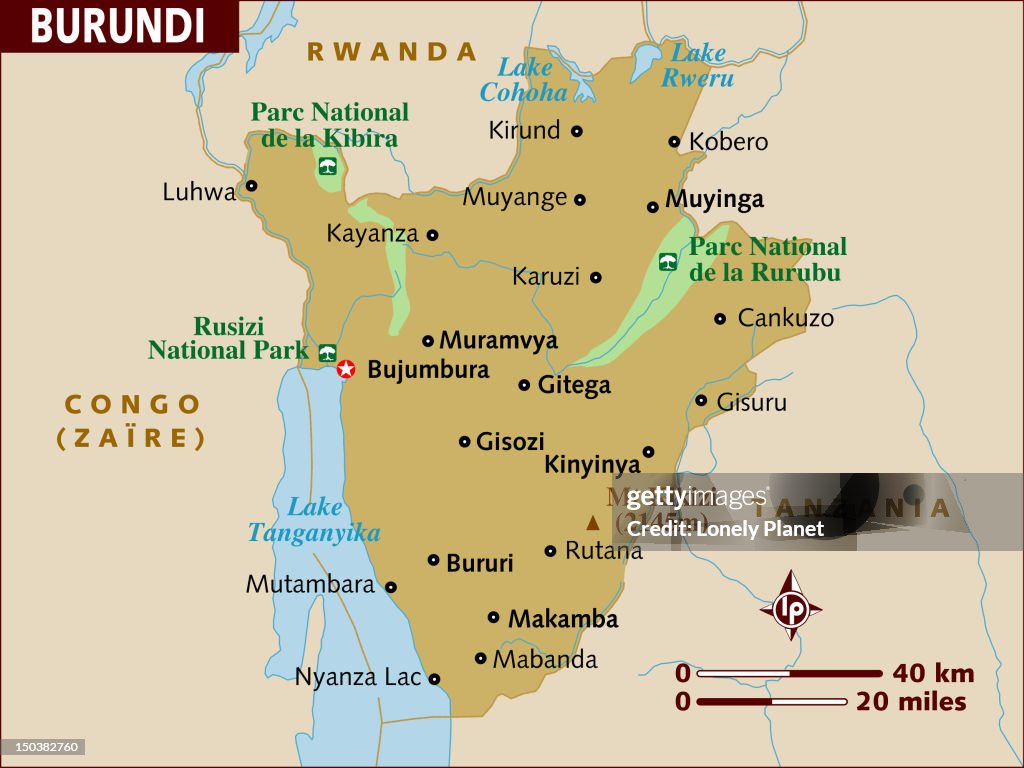Where is Burundi | Located | Things to Do
Where is Burundi , Burundi, located in the Great Lakes region of Eastern Africa, is a landlocked nation. It is adjacent to Tanzania to the east and south, the Democratic Republic of the Congo to the west, and Rwanda to the north. The population is estimated at 14,236,766, and the area is 28,000 square kilometers. Bujumbura serves as the capital of the nation. Lake Tanganyika is situated at the southwestern border of Burundi. Since its establishment 500 years ago, Burundi has been inhabited by the Twa, Tutsi, and Hutu populations. For two centuries, the nation was governed as a kingdom by the Tutsi. Germany and Belgium annexed the region in the early 20th century. Burundi and Rwanda were amalgamated as Ruanda-Urundi, a European colony.
Societal disparities between the Hutu and Tutsi sparked regional turmoil. This subsequently resulted in a civil war in Burundi during the mid-20th century. Burundi now operates as a presidential representative democracy. Roman Catholics constitute 62 percent of the population. 8 to 10 percent are Muslim, while the remainder adhere to indigenous religions or various Christian denominations.
Burundi possesses the lowest per capita GDP globally and is regarded as one of the 10 most impoverished nations. Civil wars, corruption, HIV/AIDS, and inadequate education have adversely affected GDP. Burundi exhibits a high population density and significant emigration rates. Natural resources comprise cobalt and copper. Coffee and sugar constitute significant exports.

The initial trace of the Burundian state originates from the late 16th century, when it emerged on the eastern foothills. In the subsequent centuries, it expanded by annexing smaller neighboring territories. The Kingdom of Burundi, or Urundi, located in the Great Lakes region, was governed by a traditional monarch with multiple princes subordinate to him; succession disputes were prevalent. The king, referred to as the mwami (meaning ruler), led a royal elite (ganwa) that possessed the majority of the land and mandated tribute, or tax, from local farmers (predominantly Hutu) and herders (mostly Tutsi). The Kingdom of Burundi was defined by a stratified political structure and a tributary economic system.
During the mid-18th century, the Tutsi monarchy centralized control over land, production, and distribution through the establishment of the ubugabire—a patron-client system wherein the public obtained royal protection in return for tribute and land rights. At this juncture, the royal court consisted of the Tutsi-Banyaruguru, who held a superior social rank compared to other pastoralists like the Tutsi-Hima. The lower strata of this society predominantly comprised Hutu individuals, while the Twa occupied the lowest echelon of the hierarchy. The institution exhibited some fluidity; yet, certain Hutu individuals were part of the nobility and thus had influence over the state’s operations.
The categorization of Hutu and Tutsi was not solely predicated on ethnic characteristics. Hutu farmers who successfully amassed riches and animals were frequently conferred the elevated social rank of Tutsi, with some attaining the position of intimate advisors to the Ganwa. Conversely, there are accounts of Tutsi who lost all their cattle and therefore forfeited their elevated position, being referred to as Hutu. Consequently, the differentiation between Hutu and Tutsi was mostly a socio-cultural construct rather than a strictly ethnic classification. Numerous accounts of marriages between Hutu and Tutsi individuals were also documented. Overall, regional affiliations and tribal power dynamics significantly influenced Burundi’s political landscape more than ethnicity.
Burundi transitioned from a monarchy to a republic when King Ntare V Ndizeye was ousted by his Prime Minister and Chief of Staff, Captain Michel Micombero, who dissolved the monarchy during the coup d’état in November 1966.
Geography
Burundi is among the smallest nations in Africa. It possesses an equatorial climate and is landlocked. The Albertine Rift, the western continuation of the Great Rift Valley, is located in Burundi. Burundi is situated in the central region of Africa and is positioned on a gently undulating plateau. The central plateau possesses an average elevation of 5,600 feet (1,707 meters). The borders possess a reduced elevation. Mount Heha, at 8,810 feet (2,685 meters), is the tallest peak located southwest of the capital. The Nile is the principal river in Burundi. Lake Victoria, functioning as a bifurcation of the Kagera River, is a water source. Lake Tanganyika is a significant body of water located in the southwestern region of Burundi.
The terrain predominantly comprises pastureland or agricultural fields. Rural settlements have resulted in soil erosion, deforestation, and habitat degradation. Overpopulation is the primary cause of deforestation. Only 230 square miles of forest exist, which continues to diminish at a rate of 9 percent year. The two national parks, Kibira National Park and Ruvubu National Park, were established in 1982 for conservation purposes.
History of Burundi
The initial trace of the Burundian state originates from the late 16th century, emerging in the eastern foothills. In the subsequent centuries, it expanded by annexing smaller neighboring territories. The Kingdom of Burundi, or Urundi, located in the Great Lakes region, was governed by a conventional monarch with several subordinate princes; succession disputes were prevalent. The king, referred to as the mwami, presided over a royal class known as ganwa, which possessed the majority of the land and imposed a tribute, or tax, on local farmers, predominantly Hutu, and herders, primarily Tutsi. The Kingdom of Burundi was defined by a stratified political structure and a system of tributary economic transactions.
During the mid-18th century, the Tutsi monarchy centralized control over land, production, and distribution through the establishment of the ubugabire—a patron-client relationship wherein the public received royal protection in return for tribute and land tenure. At this juncture, the royal court comprised the Tutsi-Banyaruguru, who held a superior social rank compared to other pastoralists like the Tutsi-Hima. The lower strata of this society predominantly comprised Hutu individuals, while the Twa occupied the lowest tier of the hierarchy. The institution exhibited some fluidity; yet, certain Hutu individuals were part of the nobility and thus had influence over the state’s operations.
The categorization of Hutu and Tutsi was not solely predicated on ethnic characteristics. Hutu farmers who successfully amassed riches and animals were frequently accorded the elevated social status of Tutsi, with some attaining positions as close advisors to the Ganwa. Conversely, there are accounts of Tutsi who lost all their cattle and therefore forfeited their elevated position, being referred to as Hutu. Consequently, the differentiation between Hutu and Tutsi was mostly a socio-cultural construct rather than solely an ethnic classification. Numerous accounts of marriages between Hutu and Tutsi individuals were also documented. Overall, regional affiliations and tribal power dynamics significantly influenced Burundi’s political landscape more than ethnicity.
Burundi transitioned from a monarchy to a republic when King Ntare V Ndizeye was ousted by his Prime Minister and Chief of Staff, Captain Michel Micombero, who dissolved the monarchy during the coup d’état in November 1966.


